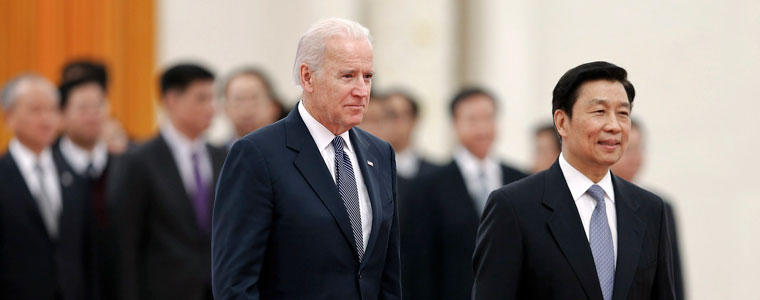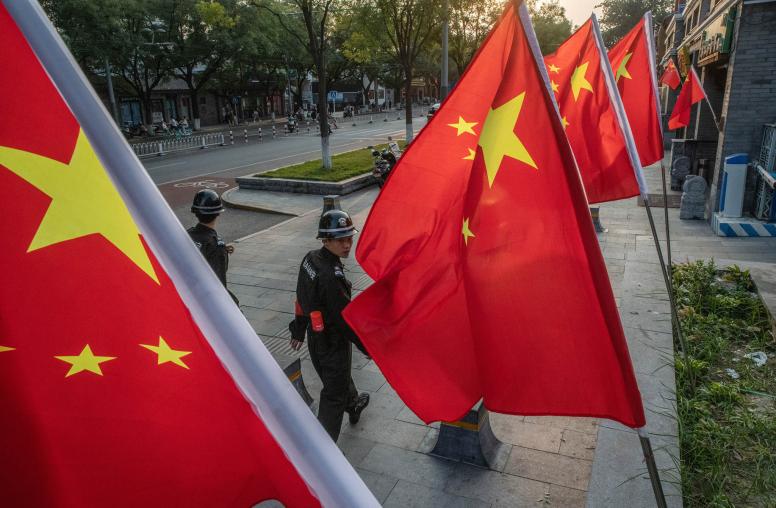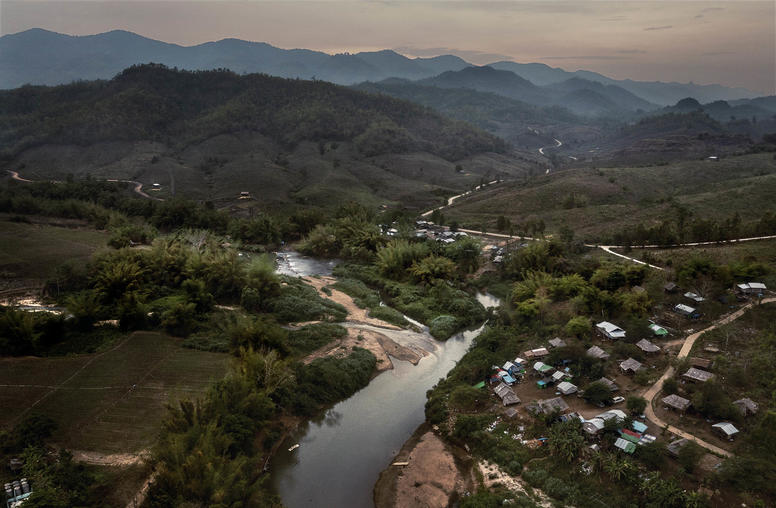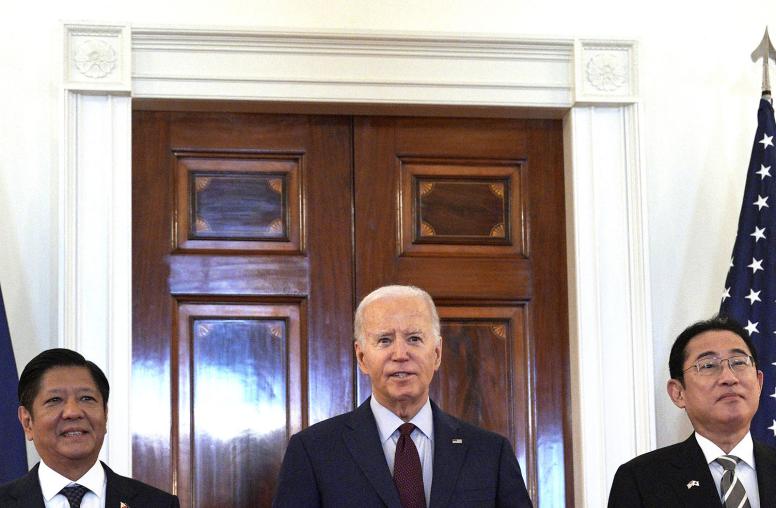
Within days, the U.S., Japan and South Korea tested China’s assertion that all aircraft entering the zone would have to submit flight plans, maintain radio contact and follow directions from the Chinese Ministry of Defense or face “emergency defensive measures.” In a region where conflict risks have traditionally been more low probability and high stakes, China’s sudden announcement shortly before a planned visit by Vice President Joseph Biden significantly increased tensions and the risk of miscalculation.
The ADIZ covers almost half of Japan’s own defense zone and overlays a group of islands that have been the subject of an escalating dispute between the two Asian nations. Preventing an accident and a larger clash requires establishing communication mechanisms and strengthening crisis mitigation, a tall order considering Tokyo and Beijing are barely on speaking terms.
Nations have the right to declare a perimeter within which unidentified aircraft can be intercepted and prevented from illegally proceeding to national airspace, and more than 20 countries have done so. Japan established its ADIZ in 1969 and has repeatedly extended its boundaries; now its closest point lies 130 kilometers off the Chinese mainland.
But several factors about the timing and content of China’s new ADIZ have caused uproar. In contrast with many such zones, the rules issued for compliance with China’s ADIZ don’t apply solely to aircraft intending to enter Chinese airspace but to all aircraft in the zone, even if they are just transiting or on patrol. The announcement also was made suddenly and without prior consultation with countries whose ADIZs overlap and whose civilian and military aircraft are affected. Finally, the fact that the new zone covers territory that Japan administers signals a possible intent to use the move as an attempt to change the status quo in China’s favor with regard to the disputed islands, which Japan calls the Senkaku and China calls the Diaoyu.
The declaration has multiplied the risks on the ground. Both sides’ maritime agencies are already patrolling in close proximity in disputed waters. While both nations have refrained from forcefully expelling the other’s vessels around the disputed islands, a maritime collision could happen at any moment due to rough weather, low visibility, mechanical failures, miscalculations, or the intentional act of activists or an overzealous individual.
Japan and China currently lack a mechanism to share and understand each other’s intentions, protocols, and bottom lines. If an accident were to take place, it could result in an armed skirmish, given that Japanese Coast Guard patrol vessels are equipped with auto cannons and certain Chinese maritime surveillance vessels have machine guns. Furthermore, neither side is clear about the other’s triggers or rules of engagement, which could lead them to prematurely call in military reinforcements.
In late 2012, the dispute over the islands took to the skies when Japan scrambled eight F-15 fighter jets in response to a China Marine Surveillance propeller aircraft conducting a patrol over the islands with a surface surveillance fleet. China has since introduced aerial drones into the area, which Japan has threatened to shoot down after initial warnings. China countered that it would retaliate.
There are no regional norms or agreements on what constitutes legitimate military activities in an ADIZ, which might range from transit to military surveillance, intelligence gathering or more aggressive actions such as live-fire exercises. In the current situation, when aircraft from either country enters the area where ADIZs overlap, the other side can scramble jets, issue warnings and even force the intruder to land. If intercepts are not conducted safely and in accordance with international norms, a collision is possible.
For decades, China and Japan had problem-solving and back channel mechanisms for crisis mitigation. But those disappeared as relations became severely strained. A standoff has ensued since September 2012, when Japan purchased three of the disputed islands from their private owner to keep them from being acquired by the nationalist governor of Tokyo, and Beijing countered with measures such as setting up an overlapping maritime administration with Coast Guard patrols. China, which always bristled under Japan’s ADIZ, now appears to want to institutionalize its authority in a bid to gain what it sees as a more equal position with Japan.
Currently, the only official Chinese communication channel available to Tokyo is through China’s Ministry of Foreign Affairs. But the Foreign Ministry is relatively weak in the Chinese bureaucracy, and often kept dangerously out of the loop on incidents involving other agencies despite their foreign affairs implications. These days discussions rarely get past initial talking points.
The result is that China and Japan lack the mutual trust and communication mechanisms to manage incidents, let alone to discuss intentions or operating protocols. In the event of an accident or skirmish, heightened nationalism would constrict the room for diplomatic maneuvers to de-escalate the situation.
The last announcement like the ADIZ declaration was when the Ministry of Foreign Affairs in Beijing set baselines to formally demarcate Chinese territorial waters in the area in September 2012. Such announcements directly empower Chinese military and civilian law enforcement actors in the disputed areas and embolden nationalists and netizens to hold the government accountable to implement them in practice. Sure enough, Internet users tracked Chinese law enforcement vessels via satellite photos, mocking and criticizing the government when they stopped short of disputed waters. One netizen summed it up: Beijing “can’t just verbally draw [the territorial sea baselines], then neglect them. That’s humiliating.”
A similar internal dynamic is taking place with the ADIZ announcement. Nationalists have piled recrimination on the government for not taking action against the U.S. challenge with its B-52 flights. And to effectively implement the new regulations, China’s Air Force will argue the need for a whole range of capabilities – from long-range surveillance radars to advanced fighter aircraft and airborne early warning aircraft. These factors will make it more difficult for the government to exercise flexibility in implementing the zone.
President Xi Jinping's domestic agenda and China's external agenda are intertwined, and he has pursued a broader, more assertive foreign policy. Although the party remains undoubtedly in charge of the military, Xi has leaned on the People’s Liberation Army as a source of legitimacy and a symbolic defender of domestic order. If he decides to continue fanning the flames of nationalism to try to ensure the party’s popularity while proceeding with promised economic reform, we could see tensions continue to rise.
China sees direct talks with Japan on the matter as backing down, and not a logical move to avoid an accident. For Japan’s part, admitting that a dispute even exists is also an unacceptable compromise, as it is seen as a weakening of its position.
Tokyo would like to see the situation rolled back to pre-September 2012, with China halting the dispatch of its patrol vessels (though they first entered Japanese territorial waters in December 2008). Beijing’s goal remains to wear down Japan -- and the rest of the world -- into accepting that Tokyo no longer solely administers the islands.
There also is a conceptual difference in how codes of conduct are seen by China. When Americans think about such protocols, we think about Cold War agreements between the U.S. and the USSR, whereby both militaries agreed on a mechanism to avoid conflict while building confidence through that process. Conversely, China feels that one can only start discussing protocols or codes of conduct once a degree of political understanding and trust exists.
Chinese military and maritime surveillance officials also are confident that they can avoid a mishap. Some actors within the military and coast guard even say that a “minor crisis” could actually help their position, and that they can control escalation.
But China didn’t expect the pushback it has received on the ADIZ announcement and will be under pressure to show that the zone will not contribute to more regional instability.
And Xi has invested a lot of time and energy in getting the U.S. to accept his concept of “a new type of major power relationship.”
So the U.S. has an opportunity to make clear the type of state conduct that would be consistent with this type of relationship. This would mean China bringing its enforcement procedures into line with international practice, and clarifying whether it intends to proceed with future ADIZ announcements, as it has indicated. As for crisis management mechanisms, China and Japan already were developing maritime communications arrangements when the September 2012 bilateral crisis happened, so the wheel does not need to be reinvented.
By increasing its involvement, Washington can reassure Tokyo of its support, ease the pressure for Japan to take more aggressive action, and serve notice to China that more aggressive action would involve not only Japan but also the United States. The risks are palpable, and the China-Japan dynamic remains one incident away from a full-blown crisis or far worse.
Stephanie Kleine-Ahlbrandt is director of Asia-Pacific programs at USIP. Follow her personal blog, at www.stephanieka.com and on twitter at twitter.com/ska_kongshan.



